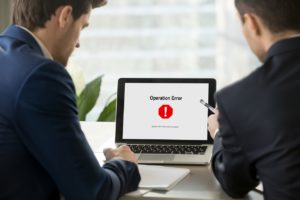When it comes to back and disaster recovery(BDR), one of the keys to making sure your business is still being able to operate efficiently is being prepared for any natural disaster or event. Not only is it important to make sure you have a BDR plan you can trust, but it is also important to make sure you are able to go through a test run so you will always be two steps ahead.
Before any type of disaster ever occurs, we want you to ask yourself the following questions:
- Do I really need a backup and disaster recovery plan?
- Am I currently using a backup and disaster recovery plan? When was the last time someone tested it?
- How long does it usually take to recover data from the current backup solution?
- When there is downtime, how much money could I lose?
- What is the average downtime for my business after a disaster? Can I afford to be down this long?
- If a disaster strikes, will there be other copies of my data in another location that I can access?
What’s The Problem?
Not every disaster is going to be the same, and this means not every recovery process will be the same. Before you take any action, we want you to understand all the issues surrounding the disaster and your data. How will all of these issues impact you? Is the current issue impacting one system or is it impacting the entire system? Do you have any files that have been deleted? Are any of your systems and servers down?
What Are Your Goals?
When it comes to a BDR solution and a simple backup of your data, the major difference in a BDR is its ability to actually recover. This is why it is so important to know what your disaster recovery goals are. Do you plan to restore only your data? Do you plan to restore only the system? Do you plan to restore both? How much time do you plan to spend on recovering files before the system recovery begins? Once you determine if you want to spend time on the recovery process, you will want to make sure you have identified the systems that are the most critical.
The Recovery
When you are walking down the recovery road, you should make sure you follow the proper procedures. Which recovery procedure do you plan to follow? We encourage you to follow the recovery procedure that will give you the best opportunity to reach the goals you have set, including file restoration.
Once you have verified the recovery, you should make sure that there is a positive interaction with the users by ensuring the network connectivity is working. You will need to make sure everyone is able to access the files, resources, and other applications. If you need to restore your business’s original system, you should carefully decide what process will be better.
After you have answered the questions and created a backup and disaster recovery plan, you should take a moment and think about the process. Did everyone handle the recovery process the way you hoped they would? Do you wish you could have done things differently?
After you have answered these additional questions, you should be able to determine what caused the failure and what things still need to be addressed and corrected. It can be a wise decision to make notes of what mistakes were made and what things can be done in the future to avoid these mistakes.
If you are looking for backup and disaster recovery solutions, we are more than happy to provide you with a variety of options that will protect your data, whether it is in the cloud or on-premise. Contact us today for more information on BDR solutions.

